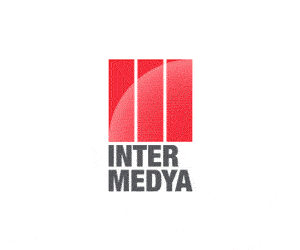
Southeast Asia’s top pay-TV platform, Malaysia’s Astro, will unveil details of its new standalone streaming platform next month, according to group chief executive, Henry Tan.
Astro is also lining up a mega roster of third-party streamers over the next two years in an aggressive aggregation play.
Although he gave no names, Tan said partnerships with five or six platforms would roll out this financial year (ending Jan 2022) and another five or six the following year for a total of about 15.
Astro already offers WarnerMedia’s HBO Go and Chinese streaming service iQiyi, as well as the world’s first iQiyi linear service, which reaches 1.5 million homes in Malaysia through Astro, Tan said.
Best guesses put Netflix, Disney+, Hotstar (or the hybrid Disney+ Hotstar), and perhaps Discovery+ in the lead to join Astro’s aggregation journey.
Speaking this afternoon on day two of APOS 2021, Tan said “the streaming tide is turning in favour of aggregators like ourselves”.
Astro, with its ready base, unrivalled reach and local content capabilities, had become “the natural collaboration partner for streaming operators”, he added.
“We provide our customers with choice, greater convenience, single bill, and in the future universal search that will make things a lot easier. Most of all, we provide customers with better value. Bundling and aggregation is our biggest strength,” Tan said.
He stopped short of naming Astro’s new fremium streaming platform, which we believe is being called Sooka for now.
With completely different branding, positioning and content from the 25-year-old Astro, Sooka will target millennials/younger audiences with a focus on local content and sports, Tan said.
“We are making sure it looks very different… catering to a different group and serving a different purpose,” he added.
Sooka is likely to carry content from Astro’s plethora of existing local digital services.
“We are reorganising and consolidating,” Tan said, describing the coming year as one of “heavy ...
Southeast Asia’s top pay-TV platform, Malaysia’s Astro, will unveil details of its new standalone streaming platform next month, according to group chief executive, Henry Tan.
Astro is also lining up a mega roster of third-party streamers over the next two years in an aggressive aggregation play.
Although he gave no names, Tan said partnerships with five or six platforms would roll out this financial year (ending Jan 2022) and another five or six the following year for a total of about 15.
Astro already offers WarnerMedia’s HBO Go and Chinese streaming service iQiyi, as well as the world’s first iQiyi linear service, which reaches 1.5 million homes in Malaysia through Astro, Tan said.
Best guesses put Netflix, Disney+, Hotstar (or the hybrid Disney+ Hotstar), and perhaps Discovery+ in the lead to join Astro’s aggregation journey.
Speaking this afternoon on day two of APOS 2021, Tan said “the streaming tide is turning in favour of aggregators like ourselves”.
Astro, with its ready base, unrivalled reach and local content capabilities, had become “the natural collaboration partner for streaming operators”, he added.
“We provide our customers with choice, greater convenience, single bill, and in the future universal search that will make things a lot easier. Most of all, we provide customers with better value. Bundling and aggregation is our biggest strength,” Tan said.
He stopped short of naming Astro’s new fremium streaming platform, which we believe is being called Sooka for now.
With completely different branding, positioning and content from the 25-year-old Astro, Sooka will target millennials/younger audiences with a focus on local content and sports, Tan said.
“We are making sure it looks very different… catering to a different group and serving a different purpose,” he added.
Sooka is likely to carry content from Astro’s plethora of existing local digital services.
“We are reorganising and consolidating,” Tan said, describing the coming year as one of “heavy activity”.
Dubbing 2021 “the year of our transformation execution”, Tan said the bulk of Astro’s linear viewing was for family movies and TV series, while niche content, such as anime and some of the more edgy shows, were watched on-demand.
“Prime-time linear still commands top popularity in terms of viewership and that has not declined,” he said.



















